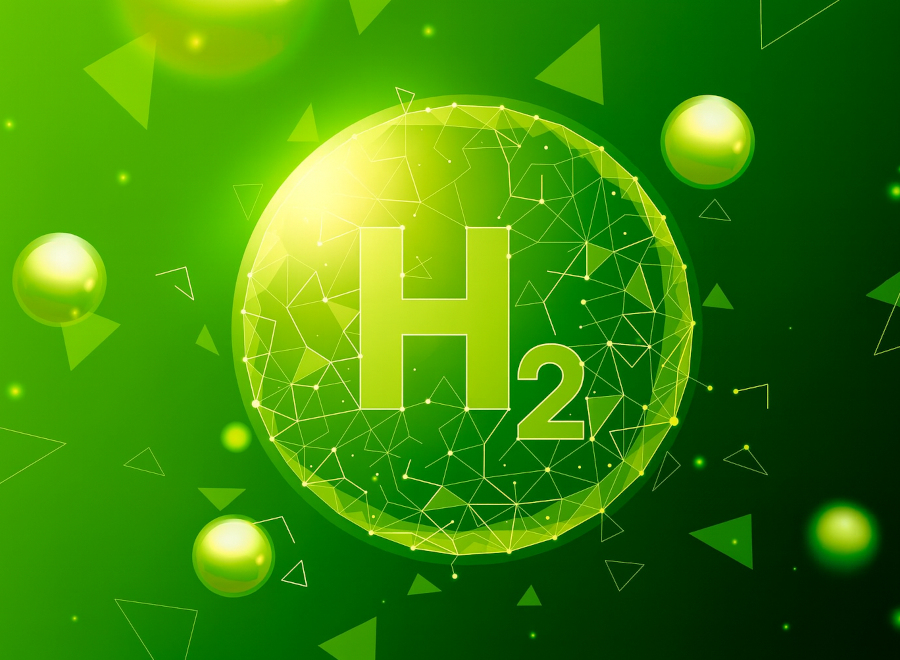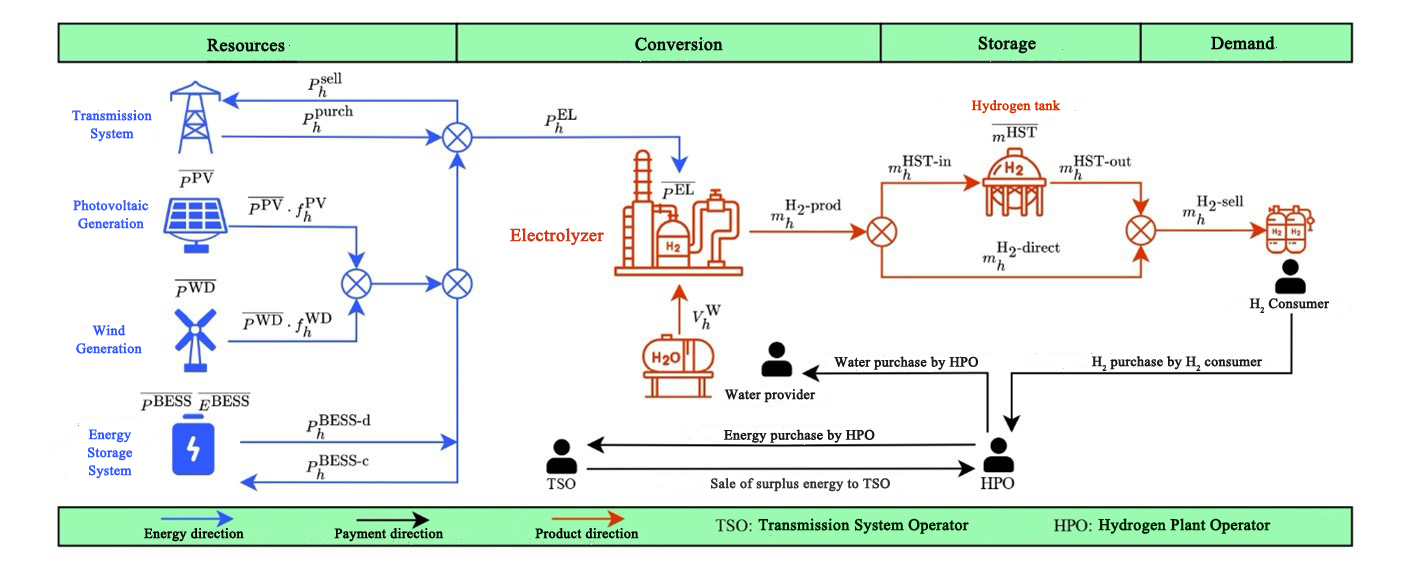

Hydrogen emits only water vapor when used as fuel, and it is the most abundant element in the universe (image: Freepik)
Mathematical tool aims to minimize total capital and operating costs while ensuring robust performance in the face of instabilities in the supply of renewable energy, since the sun and wind are intermittent sources.
Mathematical tool aims to minimize total capital and operating costs while ensuring robust performance in the face of instabilities in the supply of renewable energy, since the sun and wind are intermittent sources.

Hydrogen emits only water vapor when used as fuel, and it is the most abundant element in the universe (image: Freepik)
By José Tadeu Arantes | Agência FAPESP – Hydrogen is the most abundant element in the universe. It can be used as a clean fuel because it only emits water vapor when consumed in fuel cells or turbines. However, it is not found in isolation in nature, so it must be extracted from compounds such as water (H₂O) or natural gas (CH₄).
“Green hydrogen” is produced through water electrolysis, a process that uses electricity from renewable sources, such as solar or wind power, to separate hydrogen from oxygen. Thus, the complete hydrogen cycle, from production to use, does not generate carbon emissions, unlike “gray” or “blue” hydrogen, which are derived from fossil sources. For this reason, green hydrogen is seen as a key element in decarbonizing industrial sectors that are difficult to electrify, such as steel production, heavy transportation, and fertilizer production.
However, the variability of renewable energy sources (RES) poses challenges for planning and operating green hydrogen plants. To address these challenges, a study proposes a new model aimed at minimizing total capital and operating costs while ensuring robust performance in the face of uncertainty in renewable energy supply.
Luis Oroya, a researcher at the Department of Systems and Energy at the Faculty of Electrical and Computer Engineering at the State University of Campinas (FEEC-UNICAMP), was the first author of an article on this subject published in the International Journal of Hydrogen Energy.
“The new model, called X DRO, which stands for Extreme Distributionally Robust Optimization, was designed to deal with the extreme uncertainties that affect renewable energy generation, such as abrupt variations in climate, electricity demand, and availability of inputs. Instead of working only with average or isolated extreme scenarios, as conventional methods do, X DRO considers ambiguous probability distributions and seeks robust solutions even in the face of the worst possible scenarios,” says Oroya. “The goal is to ensure the continuity of operation and economic viability of complex systems, in which green hydrogen production is integrated not only with photovoltaic and wind sources, but also with the conventional electricity grid.”
The methodology involves selecting representative and extreme scenarios to input into the model and reflect the variability of RES. The model operates in two stages.
“In the first stage, planning decisions are considered, including the sizing of photovoltaic and wind units, battery energy storage systems, electrolyzers, and hydrogen storage tanks. The second stage deals with operational decisions related to energy exchange with the power grid, hydrogen production and storage, and worst-case scenarios for RES generation. This type of approach is crucial for the realistic sizing of hybrid power plants, especially when seeking to combine multiple renewable sources,” the researcher explains.
To make this approach computationally feasible, the authors reformulated the original problem in terms of “mixed integer linear programming” (MILP) and used an algorithm that breaks down the problem into simpler subproblems, which are then solved iteratively through repetition, adjustment, and continuous refinement.
MILP is a technique used to maximize or minimize a linear function (e.g., time or cost) while considering a set of linear constraints (e.g., resource availability or production capacity). It is “integer” because some variables can only take on integer values (e.g., the number of pieces of equipment or the number of shifts). It is also “mixed” because other variables can take any real value within a range (e.g., amount of energy generated, profit).
“In the tests carried out, the X DRO model proved capable of finding more economical and reliable solutions than traditional methods. In addition, it showed a superior ability to adapt to rapid and severe fluctuations in operating conditions, a fundamental characteristic for systems based on intermittent sources such as sun and wind,” Oroya explains.

Green hydrogen production diagram (image: Luis Oroya/FFEC-UNICAMP)
Another unique feature of the proposal is its unified treatment of the multiple energy networks involved. The study used integrated modeling of the various systems, enabling flexible redistribution of energy flows according to needs and savings opportunities.
Energy for isolated communities
In addition to using green hydrogen as vehicle fuel, in fuel cells, or as fuel for industrial turbines, Oroya points out another possibility: using it as a source of electricity for isolated communities, such as those in the Amazon. “Many of these communities, which don’t have access to the power grid, could benefit from its ability to store large amounts of renewable energy for long periods, allowing for lighting and equipment operation even during prolonged periods of low solar generation,” he says.
Regarding the possibility of immediately implementing the X DRO model, the engineer provides an example: “We have an electric charging station and an electric bus in operation at the State University of Campinas. In the near future, we’ll have a plant for the production of green hydrogen integrated with a refueling station, enabling the operation of a fuel cell-powered bus. It’d be a pilot unit with a well-defined application. The model would allow us to plan this alternative solution and compare its pros and cons in relation to the existing electrical solution.”
Oroya is currently a doctoral student at FEEC-UNICAMP. The study is part of his research project “Planning and operation of green hydrogen production systems: a robust approach”, which is supported by FAPESP.
“The development of the X DRO model represents an important methodological advance for energy planning under uncertainty, as it combines mathematical rigor with practical applicability in sustainable and complex systems, such as those for green hydrogen production,” says his doctoral advisor, Professor Marcos Julio Rider Flores.
The article “Distributionally robust optimization for green hydrogen plant planning considering extreme scenarios” can be read at www.sciencedirect.com/science/article/abs/pii/S0360319925016404.
Republish
The Agency FAPESP licenses news via Creative Commons (CC-BY-NC-ND) so that they can be republished free of charge and in a simple way by other digital or printed vehicles. Agência FAPESP must be credited as the source of the content being republished and the name of the reporter (if any) must be attributed. Using the HMTL button below allows compliance with these rules, detailed in Digital Republishing Policy FAPESP.





